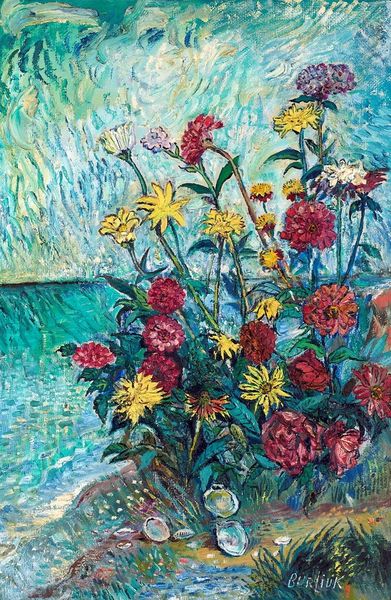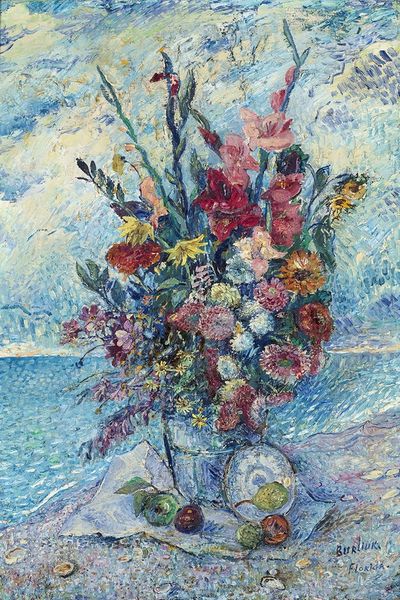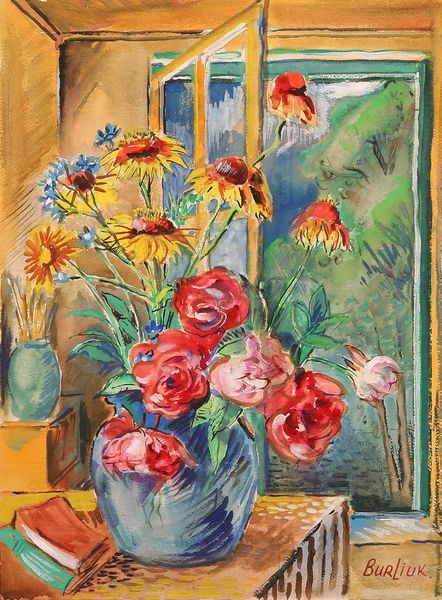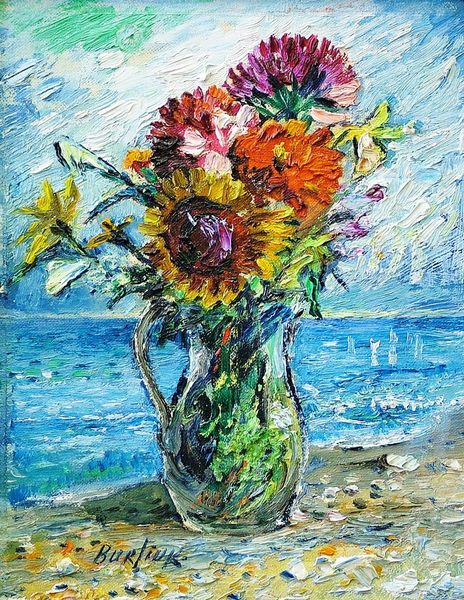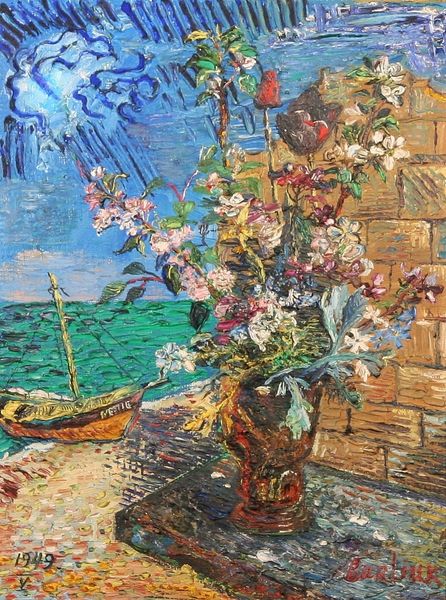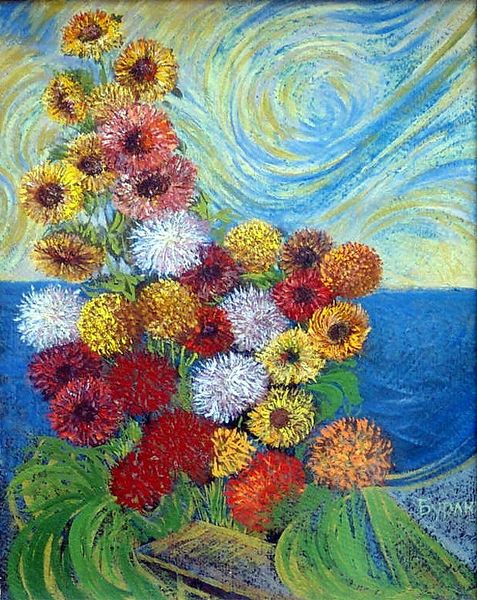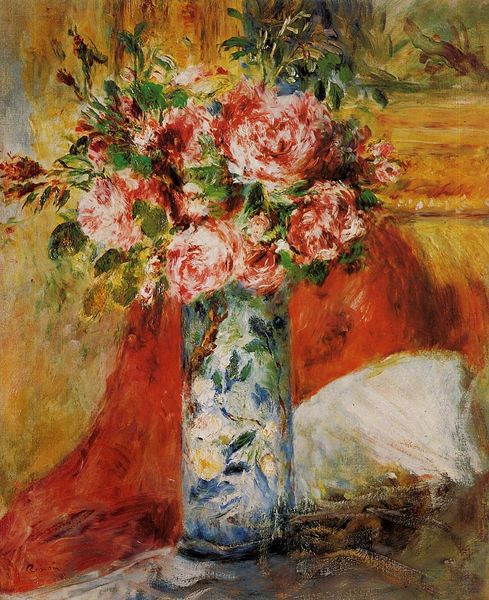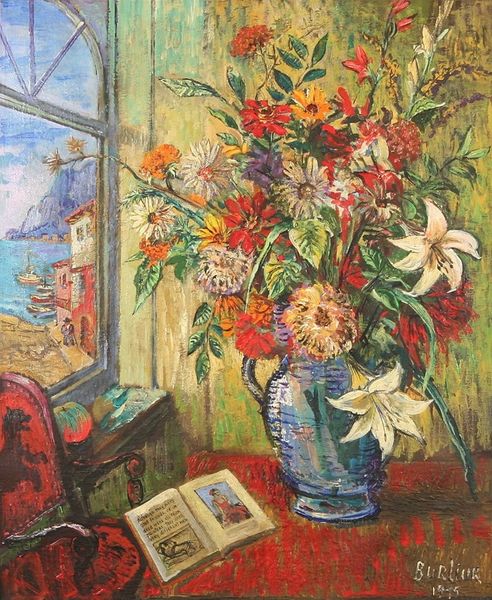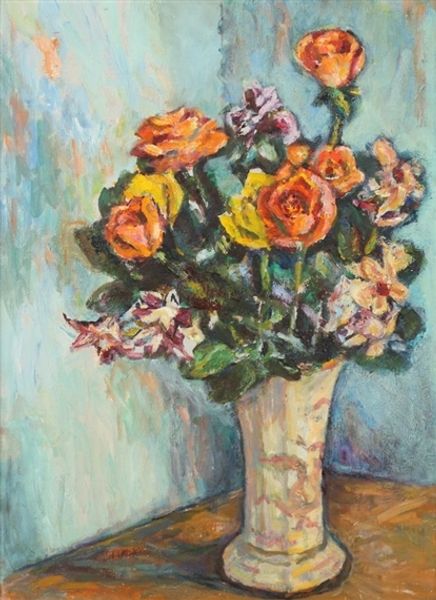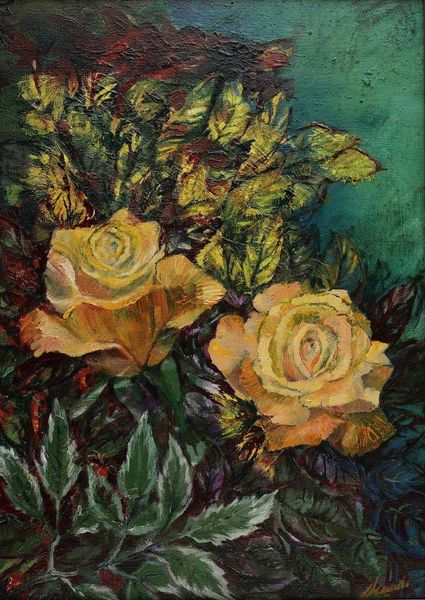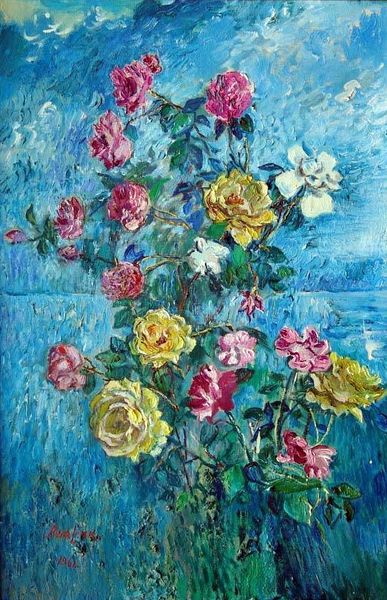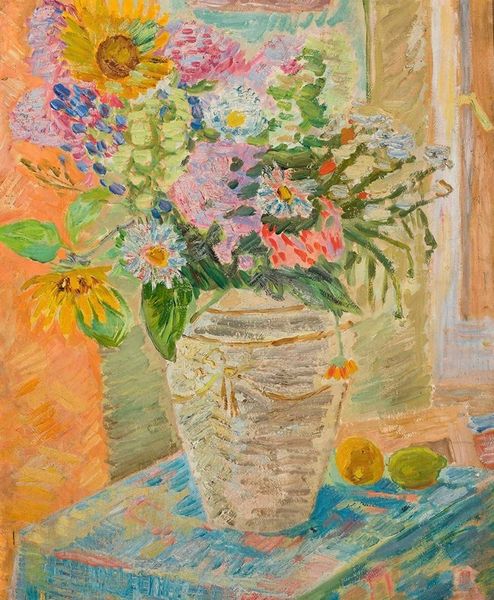
Copyright: David Burliuk,Fair Use
Editor: Here we have David Burliuk's 1948 oil on canvas, "Mexico." It feels quite vibrant, almost Fauvist in its intensity of color. What do you see as you examine the piece, keeping in mind this tension between still life and landscape, interior and exterior space? Curator: Primarily, I observe a fascinating interplay of spatial planes. The foreground presents a still life—a vase overflowing with flowers, and a book. But behind this intimate arrangement unfolds a landscape, depicted with broad, energetic brushstrokes. Notice how the color palette links these disparate elements: the blues of the sky echo in the vase’s ornamentation. Do you see how that connection of color affects the perception of depth? Editor: Yes, it's almost as if the landscape bleeds into the interior, and vice versa. I noticed how even within the vase of flowers, there's this incredible push-and-pull created by contrasting warm and cool tones. It almost seems that these objects are defined and broken at the same time, their formal structures never resolve! Curator: Precisely. Burliuk isn't striving for illusionistic realism. The expressive use of color and line takes precedence. Consider the materiality of the paint itself: thick impasto in some areas, thinner washes in others. The varying textures create a dynamic surface that invites the eye to explore every corner of the canvas. The representation of reality isn't its true purpose: do you feel that its vitality transcends its material origins, as if form is subordinate to experience? Editor: Absolutely! That active construction seems more focused on expression. Seeing the brushstrokes as more than a mechanical means shifts how I think of landscapes, too. Thanks! Curator: Indeed, examining Burliuk's compositional strategy reveals his exploration of form beyond subject matter, so seeing is believing.
Comments
No comments
Be the first to comment and join the conversation on the ultimate creative platform.
